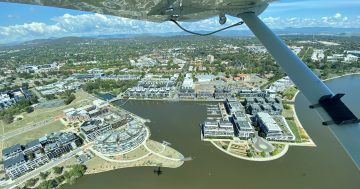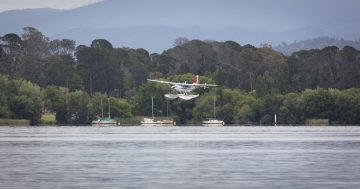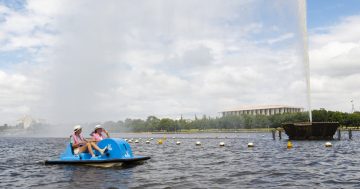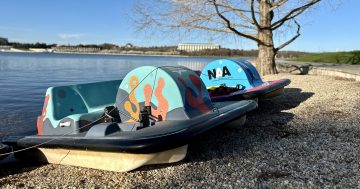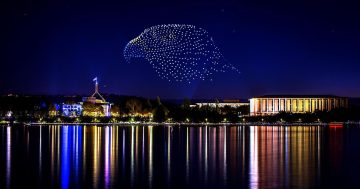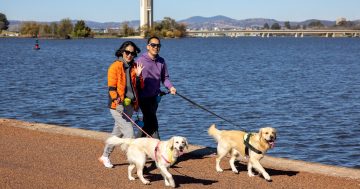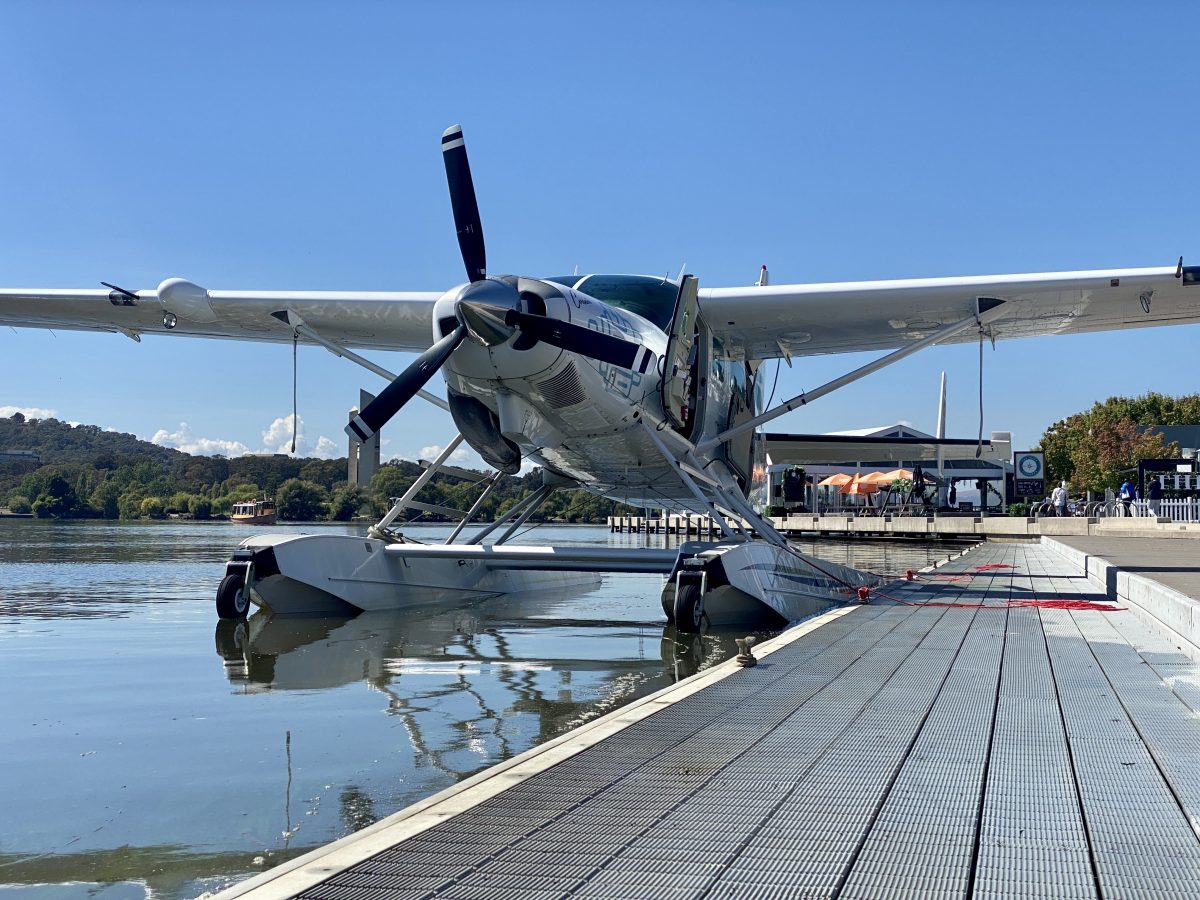
The Sydney to Canberra seaplane flights are waiting on final approval from CASA and Air Services Australia. Photo: James Coleman.
If you’re wondering how a direct flight service between Lake Burley Griffin and Rose Bay in Sydney could possibly attract enough patrons to pay for itself, we’re on the cusp of a “renaissance” for regional flights according to the CEO of Sydney Seaplanes.
The secret lies in electricity.
Sydney Seaplanes is one of two operators – the other being South Coast Seaplanes in Moruya – to receive permission from the National Capital Authority (NCA) to take off and land from the western-most part of the lake.
South Coast Seaplanes has yet to negotiate the details of the licence, but Sydney Seaplanes has been cleared for five flights a day, seven days a week, 52 weeks a year, with a poor-weather backup landing option at Canberra Airport.
The first flight was reportedly meant to take off in December 2023, but there were delays in getting the licence from the NCA.
Sydney Seaplanes CEO Aaron Shaw says they’re now waiting on final approvals from the Civil Aviation Safety Authority (CASA) and Air Services Australia departments on matters relating to low-visibility flying permits, and he expects the service to start in earnest come spring.
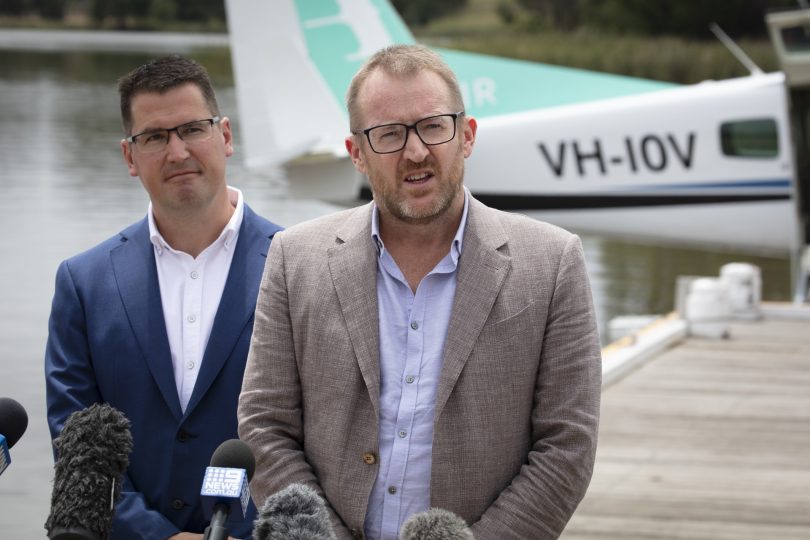
Sydney Seaplanes CEO Aaron Shaw addresses the media. Photo: Thomas Lucraft.
“They’re working productively … and with enthusiasm about the concept but, as with everything in aviation, it just takes a bit of time, that’s all,” he says.
The approval process couldn’t commence until Sydney Seaplanes had received the NCA licence, which only came through in December.
“The other thing is, we don’t want to kick off the service in winter, because winter adds a challenging complexity to the service because of the fogs and so on that are quite common in Canberra winters.”
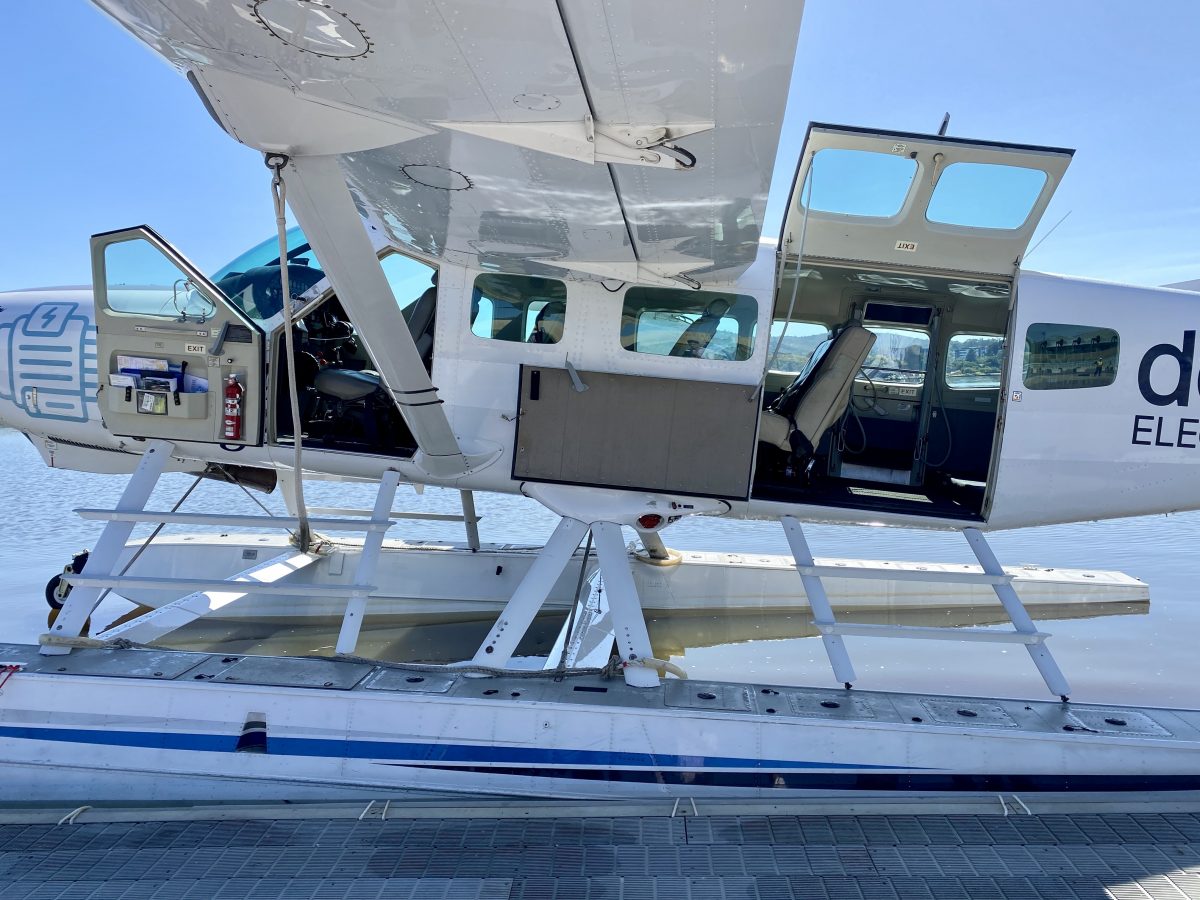
Sydney Seaplanes conducted demonstration flights over Canberra on March 2023. Photo: James Coleman.
During a demonstration flight over Canberra in March 2023, Mr Shaw told Region the service will tap into a “very good commercial opportunity here”; namely, more than a million flights between Sydney and Canberra every year.
“What we’re creating here is one of the world’s most spectacular commuter services, where you’ve got Australia’s Parliament House at one end and the Sydney Opera House and Harbour Bridge at the other,” he said.
Mr Shaw floated plans to compete with commercial airlines on pricing too. But where this is a space small operators have typically struggled, he has a plan to secure its future.
The CEO of Sydney Seaplanes is also the founder of an Australian company pioneering aeroplanes powered by batteries and hydrogen fuel cells, and says these have the potential to slash operational costs.
Dovetail Electric Aviation, formed through a partnership with Spanish engineering company Dante Aeronautical, has attracted grant funding and a place at LaTrobe Airport in Melbourne from the Victorian Government and even an investment from Rex Airlines.
So far, testing is still ground-based, but Mr Shaw hopes to start actual test flights next year. He says the first real-world adopters will then be the small, nine to 20-seat planes like those performing the Sydney to Canberra service.
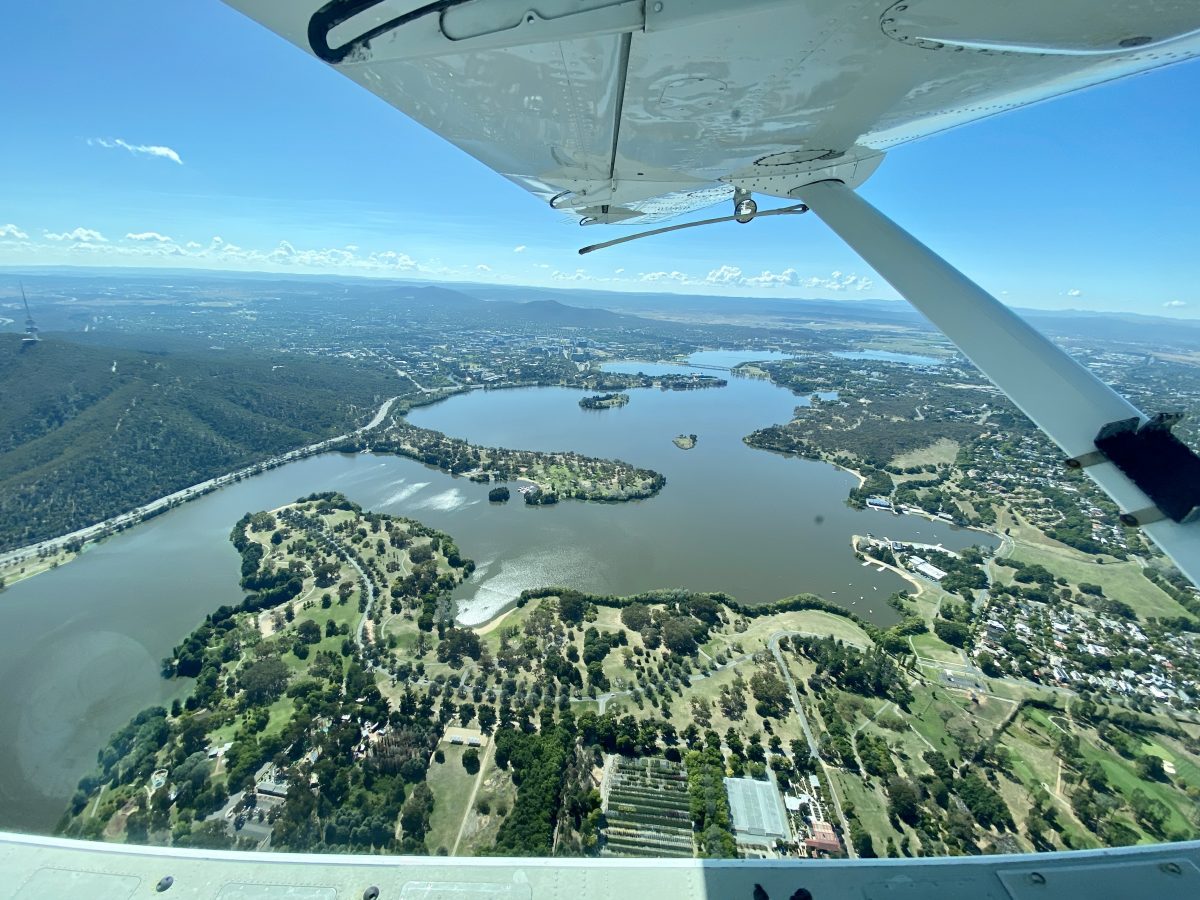
In the air over Lake Burley Griffin. Photo: James Coleman.
“From an environmental point of view, [electric planes] are very beneficial, and from an operator’s point of view, they’re much cheaper to run, and so some of those services into regional Australia that have been dwindling or cancelled over the years can have something of a renaissance.
“That’s our view on it, and I think it’s going to start playing out over the next five years.”
Aircraft batteries fall under strict standards in aviation, and have to be replaced fairly regularly depending on the number of starts and types of flights, but Mr Shaw estimates the overall reduction in operational costs to be about 40 per cent.
“There’s still a fair amount of work to go, but one of the really positive things is that there’s so much happening in the world right now on the aviation technology front, I’ve never seen anything like it.”












